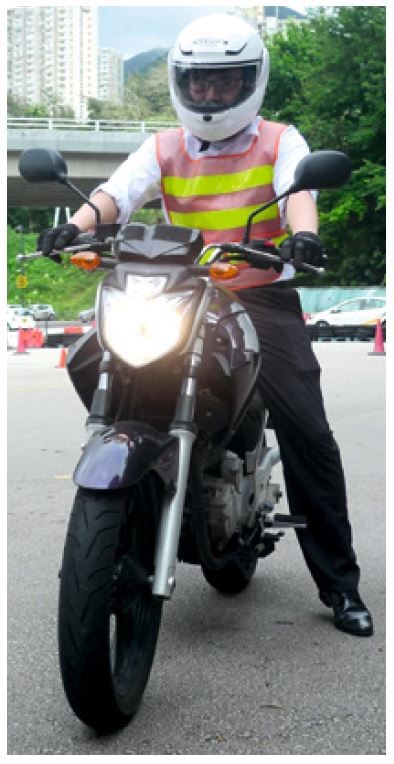You and your passenger are more vulnerable than other vehicle drivers and passengers, as you do not have the protection given to them by their vehicles and seat belts -- which you have to make up by the use of your skills.
The best way to remain upright and in complete control of your machine is to avoid abrupt changes -- fierce braking, hard acceleration, bad gear changing, sudden changes of course -- and this means thinking ahead so that each change is carried out smoothly and gradually. You cannot suddenly change direction at any but the lowest speed.
Using rear-view mirrors in good time will help you maintain awareness of traffic situation behind. No matter how good your mirrors are, look around and over your shoulder to check the blind spot before moving off, changing direction/lane or overtaking.
You must not ride a motor cycle or motor tricycle on a footway, pedestrian only road, footpath, or public open space.
If your motor cycle or motor tricycle has a cylinder capacity of less than 125 cc, or rated power less than 3 kW if it is solely propelled by an electric motor, you must not ride it on an expressway.
You must not wear earphones of any audio devices when riding a motor cycle on the road.
Road surfaces
The condition of the road surface is very important to every riders of motor cycle or motor tricycle. You depend upon the grip of your tyres on the road surface for your stability and safety. Look out for danger from poor surfaces and potholes even in dry conditions. Surfaces become slippery not only when they are wet, but also when they are covered with loose gravel or sand, mud or oil. When wet, objects set in the roadway such as metal road studs or manhole covers, as well as road markings, can become slippery and may cause some types of front tyre to deviate uncomfortably off course. Good and well maintained tyres are essential for safe riding of a motor cycle or motor tricycle.
If the road is flooded, beware of potholes or mud hidden below the surface of the water.
Motor cycles passing/overtaking
In slow moving or stopped traffic, you may only ride slowly through gaps that can be driven through without danger. Look out very closely for pedestrians and for vehicles that may move into your path. If in doubt, stay in the traffic lane in the normal position. On two-way roads with 'Double white' lines, when you wish to pass between the vehicle in front and the 'Double white' lines, only do so if it is safe. You must ensure that the driver in front knows you are coming through and will not push you over the 'Double white' lines and into the oncoming traffic.
In other situations, do not overtake another vehicle by using the same traffic lane as that used by the vehicle. You should overtake in the normal way using the traffic lane on the right (for rules and advice for overtaking, see page 56).
|
Being seen
|
 |
The rider of a motor cycle or motor tricycle must turn on all front lamps, headlamps and rear lamps at all times (including daytime) while riding. You must dip your headlamps where there are street lights or in the face of approaching traffic.
It is difficult for other road users to see motor cycles because when seen end-on, they are 'thin' (a quarter the size of a car) and often dark in colour. You need to ensure that you can be seen by other road users, including pedestrians.
Switching on your headlamps will help other road users, including pedestrians, to see you coming; if necessary, flash your main beam. Your rear light will indicate your presence to drivers behind. Fluorescent or reflective clothing -- or just a reflective belt -- will help, day and night.
Good positioning -- riding where other drivers and pedestrians will be looking and expect to see you -- is very important.
|
Riding Along
